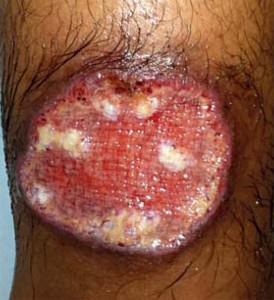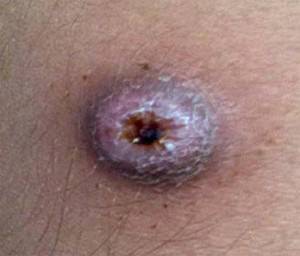
Running from the war-torn nation of Syria, escaping with one’s life, only to be struck down by one of the following: flesh-eating disease, leishmaniasis, measles, polio, hepatitis A, tuberculosis and other infections, makes American problems pale by comparison. Yet, this is the reality and the host countries who have invited the Syrians to seek asylum must now deal with an epidemic.
Regarding the flesh-eating disease, leishmaniasis, PLOP warned in its latest report, “We may be witnessing an epidemic of historic and unprecedented proportions, but it has largely been hidden due to lack of specific information.”
Cutaneous is the most common form among Syrians. It manifests in skin sores that typically develop within a few weeks or months from a sand fly bite. The sores can initially appear as bumps or nodules and may evolve into volcano-like ulcers.
The PLOP journal reported leishmaniasis is now affecting hundreds of thousands of refugees and has spread to Iraq, Lebanon, Jordan, Libya and Yemen. In Yemen alone, 10,000 new cases have been reported annually, the journal reported.
“Additionally, the number of cases of CL (cutaneous leishmaniasis) has most likely been severely underreported” due in part to constraints on collecting data from violence-torn regions, PLOP warned.
Countries who have Syrian refugees within their borders are ill-prepared to deal with the CL outbreak, as training within this type of flesh-eating bacteria is not common. Treatments are expensive, toxic and a few are not easily available.
Dr. Jane Orient, executive director of the Association of American Physicians and Surgeons, warned, “Officials need to know where they’ve been and what diseases occur there. We need sophisticated, reliable screening methods and excellent vector control in any areas where refugees stay. We’d all need to refer patients to tropical diseases specialists,”
In November, 2014 PLOS documented the spread of measles from among the Syrian refugee population:
Measles has swept through Syria, including Aleppo and the northern regions, with over 7,000 confirmed cases. This epidemic has not spared refugees in neighboring countries, even among highly vaccinated populations. In Jordan, 24 cases of measles were reported in 2012, while over 200 cases were reported in 2013. In Lebanon, nine reported cases of measles in 2012 increased to 1,760 cases in 2013, only 13.2% of which were among Syrian refugees.
The WHO reported that 2013 saw Syria’s first outbreak of polio since 1999. According to an April 2015 WHO report, 35 children were subsequently paralysed by polio before the start of a new vaccine campaign.
Dr. Orient warned that the United States needs to have an Ellis Island style quarantined place, as the “only sensible public health policy for refugees”.
The PLOS report states:
The full extent of the Old World CL epidemic in Syria and in bordering countries, as well as in Libya and Yemen, remains mostly unknown. An adequate disease burden analysis depends on programs of active surveillance and disease detection, but these are few and far between due to the violence and instability. We may be witnessing an epidemic of historic and unprecedented proportions, but it has largely been hidden due to lack of specific information. The biggest limitation of this paper is the inability to access data due to the difficulties of gathering accurate and current information from regions of instability. Surveillance is even more challenging in the current refugee crises due to the unprecedented magnitude of population migration.
Source: Breitbart


AND EVERYONE WANTS HER FOR PRESIDENT.
Don’t even think about bringing that$#%&!@*over here.
America close border’s